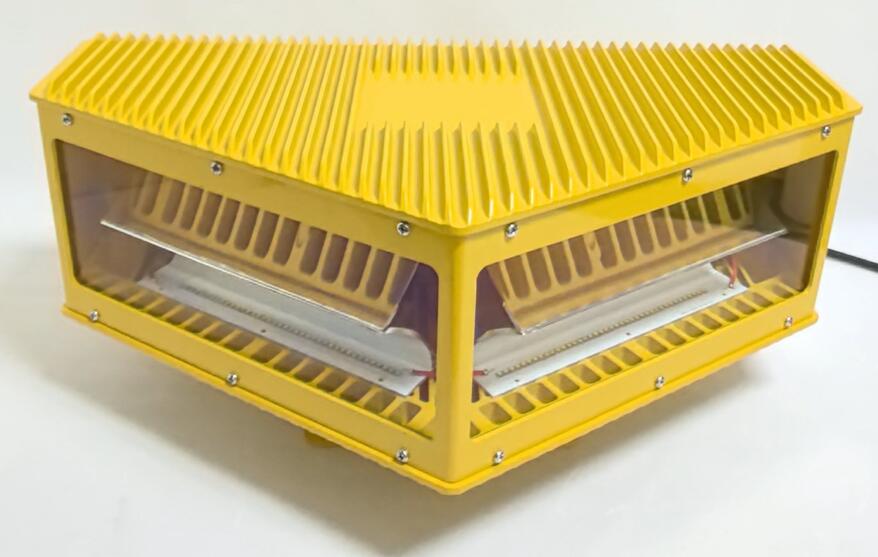Aviation Lights on Buildings: Essential Safety Markers in Urban Skylines
As cities grow taller and air traffic increases, aviation lights on buildings have become indispensable for ensuring flight safety. These specialized lighting systems mark high-rise structures, making them visible to pilots and preventing collisions. This article explores the purpose, types, regulations, and technological advancements of aviation lights on buildings, highlighting their critical role in modern urban airspace management.
Why Buildings Need Aviation Lights
High-rise structures pose significant risks to low-flying aircraft, especially during nighttime or poor weather conditions. Aviation lights on buildings serve three primary functions:
Obstruction Warning – Alert pilots to tall structures along flight paths.

Altitude Indication – Different light colors and intensities help pilots judge building heights.
Regulatory Compliance – Most countries mandate lighting for buildings exceeding certain heights.
Without these lights, skyscrapers and communication towers could blend into the night sky, increasing mid-air collision risks.
Types of Aviation Lights Used on Buildings
1. Low-Intensity Red Lights (L-810)
Used for buildings under 150 feet (45 meters).
| aviation lights on buildings |
Steady-burning or flashing red LEDs.
Common on shorter urban structures near airports.
2. Medium-Intensity White Strobe Lights (L-864)
Required for buildings between 150–500 feet (45–150 meters).
Bright white strobes with specific flash patterns.
Often installed on commercial high-rises and telecom towers.
3. High-Intensity White Strobe Lights (L-865)
Mandatory for buildings taller than 500 feet (150 meters).
Ultra-bright flashes visible from long distances.
Used on skyscrapers and super-tall structures.
4. Dual Lighting Systems
Combine red and white lights for optimal visibility.
Red lights mark lower sections, while white strobes highlight the highest points.
Regulations Governing Aviation Lights on Buildings
Different aviation authorities enforce strict lighting standards:
1. Federal Aviation Administration (FAA) – AC 70/7460-1L
Defines light intensity, color, and flash rates.
Requires backup power systems for critical installations.
2. International Civil Aviation Organization (ICAO) – Annex 14
Sets global standards for obstruction lighting.
Ensures consistency across international airspace.
3. European Aviation Safety Agency (EASA) – CS-ADR-DSN
Specifies lighting requirements for European structures.
Includes environmental and wildlife protection guidelines.
Non-compliance can result in fines, forced modifications, or increased liability in case of accidents.
Technological Advancements in Building Aviation Lights
1. LED Dominance
Replaced outdated incandescent and halogen bulbs.
Benefits:
Longer lifespan (50,000+ hours).
Lower energy consumption.
Brighter, more reliable illumination.
2. Smart Monitoring Systems
IoT-enabled sensors for real-time performance tracking.
Automated fault alerts reduce maintenance delays.
3. Solar-Powered Solutions
Ideal for buildings in remote areas.
Reduce dependency on grid electricity.
4. Adaptive Lighting
Adjust brightness based on weather conditions.
Minimize light pollution while maintaining safety.
Installation and Maintenance Best Practices
1. Strategic Placement
Lights must cover 360 degrees without blind spots.
Multiple tiers may be needed for very tall buildings.
2. Weatherproofing
Must withstand extreme temperatures, wind, and rain.
Corrosion-resistant materials for coastal cities.
3. Routine Inspections
Regular checks for burned-out bulbs or electrical faults.
Cleaning lenses to maintain optimal visibility.
Future Trends in Building Aviation Lighting
AI-Powered Systems – Predictive maintenance and dynamic brightness adjustment.
Eco-Friendly Designs – Dark-sky compliant lights to reduce urban light pollution.
Drone-Assisted Inspections – Safer and more efficient maintenance of high-rise lights.
Aviation lights on buildings are a non-negotiable safety feature in modern cities. As urban structures continue to rise, these lighting systems must evolve with smarter, more efficient technologies. Compliance with international regulations ensures that buildings remain visible to pilots, preventing accidents and enhancing air traffic safety.
The future of aviation lights on buildings lies in automation, sustainability, and advanced monitoring—ensuring they remain effective guardians of urban airspace for decades to come.
